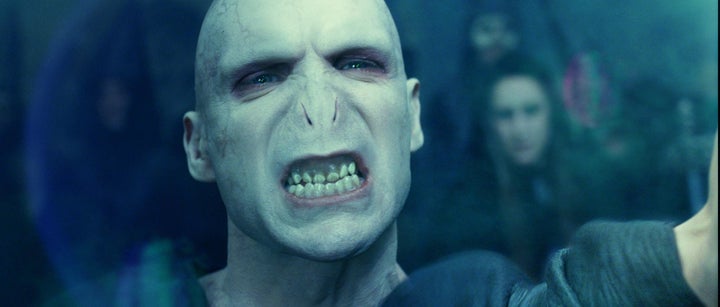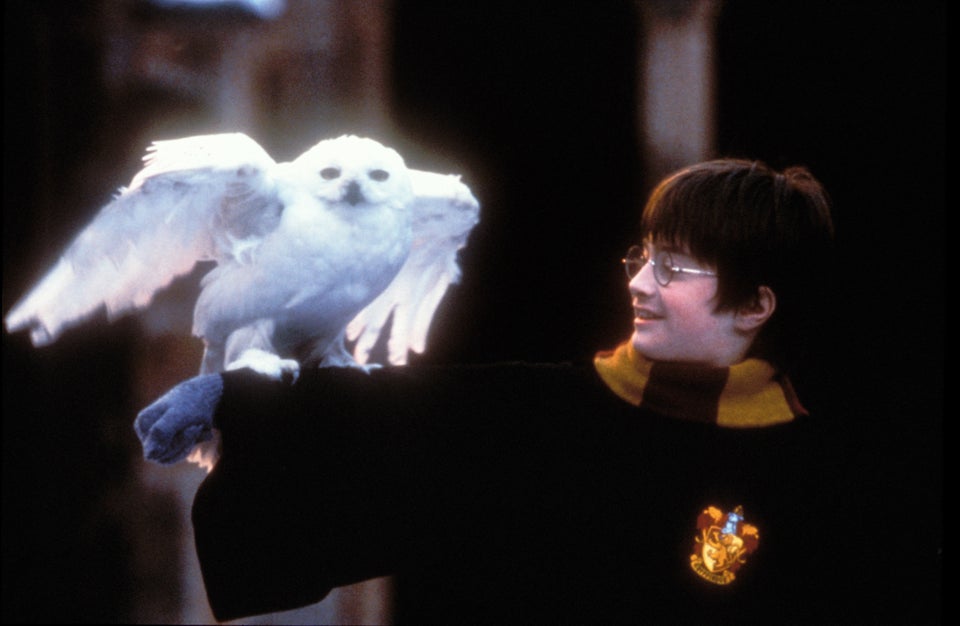For “Harry Potter” fans, it’s hard to forget the striking imagery of Voldemort’s death in “Harry Potter and the Deathly Hallows: Part 2.” The Dark Lord disintegrates into nothing in the iconic moment, but before filmmakers arrived at that scene, apparently he was just going to make like a tree and leave.
In the “Harry Potter” book series, which debuted 20 years ago, Voldemort is hit by his own rebounding curse and kind of just lies there on the ground. Filmmakers approached the death differently.
“I remember the moment of the weeks [after] trying to nail down what would really happen because we knew it was important. It was important to us, but we knew it was going to be even more important to people who read the books,” Moving Picture Company VFX supervisor Greg Butler said.
Butler told us he worked on the death concepts with animation supervisor Ferran Domenech and another visual effects supervisor, Tim Burke. And one of those concepts, yes, involved trees.
Though, the story of Voldemort’s death really begins with Nagini.
Chapter 1: The snake who didn’t live.
As the last Horcrux, Nagini’s death played a pivotal role in Voldemort’s ultimate demise. Butler said it was a “big deal” for MPC. They saw the “gooey, smokey, energy release” from previous films as a basis for what to do when a Horcrux is destroyed. But he continued, “There needs to be some kind of physical resemblance to Voldemort himself inside this magic.”
The effects supervisor said that they accomplished that by secretly hiding Voldemort’s face in the smoke that comes out when Nagini is killed.
“We took the actors face who played the young Tom Riddle and made that out of smoke. We took [Voldemort actor] Ralph Fiennes’ face, we made that out of smoke, and then we distorted a couple with both of those and made those out of smoke. So you have these smokey heads floating, all of which have some resemblance, some aspect of Voldemort performances.”
He added, “Maybe when you look at the shot you say, ’Yeah, I don’t see that,′ but we put it in there with the idea that maybe if you didn’t notice it, you’d get the feeling that there are lots of dead Voldemort souls in there or something.”
Chapter 2: Voldemort’s in-tree-guing death.

With Nagini out of the picture, there was no chance Voldemort could come back.
Butler told us that to show this in the film, “We invented new visual stuff, and we went through a whole bunch of concept art. There’s even some crazy stuff where he becomes this blackened, charcoal-y tree shape that’s growing and then that tree turns to ash and blows away in the wind ... that’s how far down the road we went with some of these designs, trying to come up with something you really couldn’t miss.”
“What we did was there’s a part where he’s sitting in the courtyard, and then he turns into this blackened shrub-thing with fingery branches, and then I think we went larger and made it into a tree shape because we had a lot of screen space to fill,” Butler explained.
A blackened tree wasn’t enough, though.
The wide shot had Voldemort sitting in the courtyard with his shoulders slumped. According to the VFX supervisor, he would look “not quite dead and then he died sort of sitting up,” which reminded him of “Blade Runner.”
“In the ‘Blade Runner’ scene, the character is not quite human [and] just kind of stops having whatever was inside him that kept him operational. Voldemort, the shell, the humanoid form, is definitely gone, but what happened to the evil part? How do we make that go away?” he said.
“Somebody brought up the idea, ‘I like him there in the middle of this whole thing, but can something be rising up off of him?’ We started doing little black particles coming up off of him as if that’s the dark energy, his evilness is drifting off of him like some kind of gritty smoke,” Butler said. “Now we’re showing him going up into the air and dispersing because you don’t want the audience to think that he’s just going to show up again after he collects himself and be on the other side of the courtyard. He has to actually disperse into the wind.”
Butler said the idea for the skin peeling off was then brought up, which we ended up seeing in the movie.
“We thought, ‘What are we gonna do for the close up?’ And we thought of the idea that his skin peels off, but it peels off in such a thin, onion-skin kind of tissue that there would be multiple layers. It would pick up in the wind.”
Still, the job wasn’t done.
Director David Yates told MPC they needed a “big, epic shot” looking down with all of the particles coming towards the camera, which would show the death from a god’s eye view.
“That was one of the last shots we even thought of for the movie and produced for the movie, very last minute because it meant that it was the only shot we didn’t have anything we filmed for. It was going to have to be a completely digital, made-up shot that takes place within Hogwarts. But luckily, without knowing we would need it, Tim Burke had already had [effects company] Double Negative build an entirely digital Hogwarts for things he knew he needed it for and just because you never know what’s going to happen.”
And with that, the Dark Lord was no (Volde)more.
Of the final death, Butler says, “it was quiet. It was peaceful. It was physical but also a little magical.”
Voldemort may not have lived forever, but we’ll always remember how the heir of Slytherin finally vanished into thin air.
From June 1 to 30, HuffPost is celebrating the 20th anniversary of the very first “Harry Potter” book by reminiscing about all things Hogwarts. Accio childhood memories.

